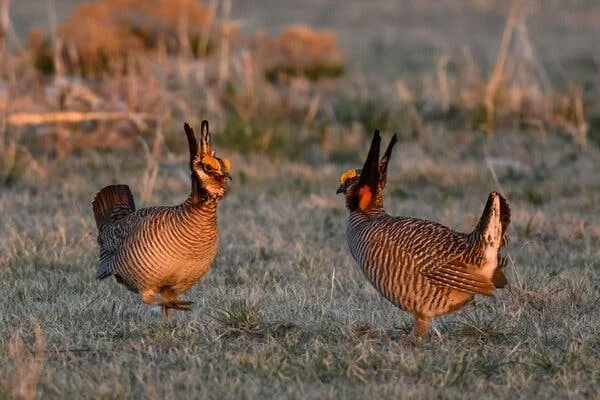
Trump Administration Scrutinizes Lesser Prairie Chicken Protections Amid Environmental Concerns
The lesser prairie chicken, celebrated for its vibrant courtship dance, is now at the center of a controversial environmental debate. This quirky bird inhabits the grasslands of southern and central United States—lands increasingly coveted for agricultural and energy development. Researchers alarmingly estimate that the population has plummeted from hundreds of thousands, or even millions, to just about 30,000 today due to habitat loss. This plight underscores the urgent importance of wildlife protections in the face of industrial expansion.

This recent court filing by Trump administration officials aims to abolish the federal protections that were granted to the lesser prairie chicken during the Biden administration. Their argument hinges on the belief that the Fish and Wildlife Service made an error by categorizing the bird into distinct populations—a decision that played a crucial role in its endangered listing.
The situation escalates a long-running battle over the bird’s status, one that has seen it oscillate between protections and neglect for over three decades. Legal changes make this a hot topic; the Trump administration’s push reflects broader concerns about their stance on environmental regulations. In defense of this policy shift, Jason Rylander from the Center for Biological Diversity criticizes the administration's actions as politically motivated and detrimental to conservation efforts, claiming it aligns more closely with fossil fuel interests than ecological science.
Conservationists are skeptical of the administration’s projection that alternative conservation programs can adequately support the species in the absence of federal protections. Rylander articulates a chilling forecast, predicting that litigation will be necessary just to ensure a timely review of the lesser prairie chicken’s status.
The lesser prairie chicken's classification as vulnerable by the International Union for Conservation of Nature's Red List further emphasizes the critical need for awareness and action. These grasslands represent some of the most threatened ecosystems, highlighting an urgent call to preserve biodiversity at a time when the planet faces unprecedented loss.

In summary, the fate of the lesser prairie chicken is intertwined with broader environmental policy movements. As this situation unfolds, it begs the question: What sacrifices should be made in pursuit of industrial growth versus ecological preservation? We invite our readers to share their thoughts and experiences concerning wildlife protection and conservation.